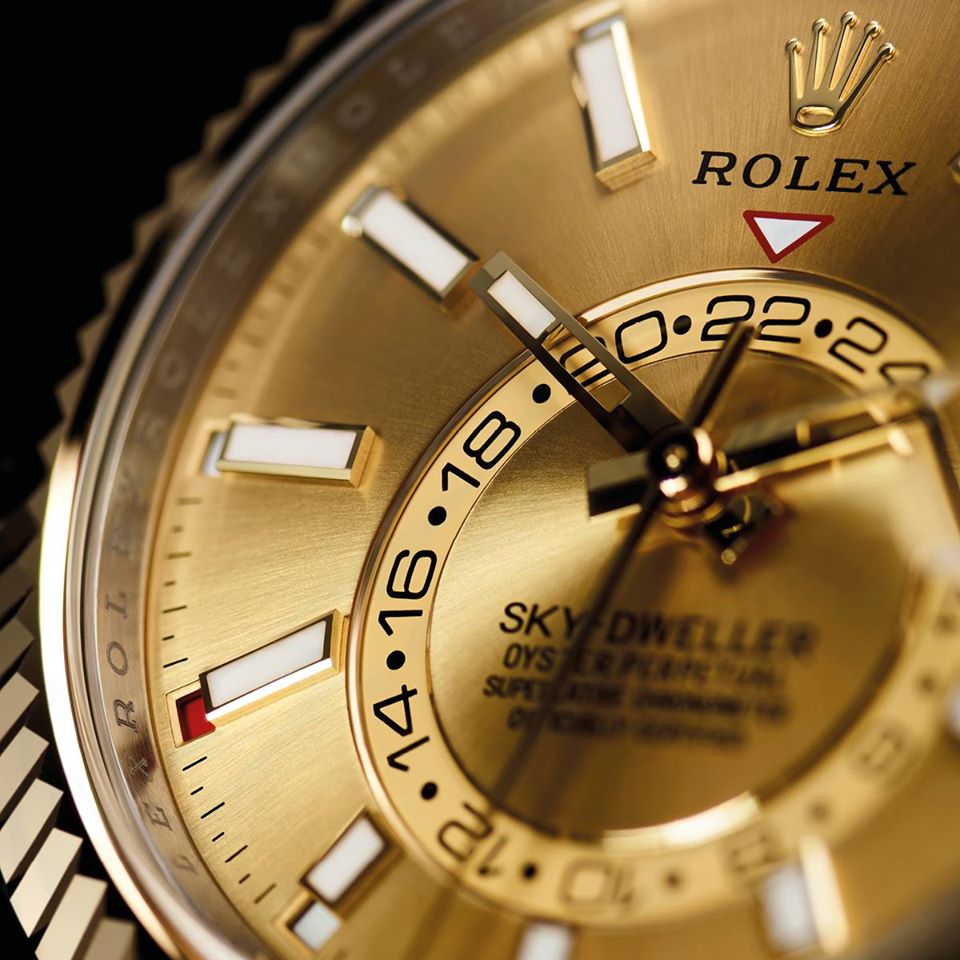[vc_row njt-role=”people-in-the-roles” njt-role-user-roles=”administrator,armember”][vc_column][vc_column_text]
While an annual report on the Swiss watch industry was announcing at the beginning of March a good economic health for major actors in the sector in 2019, the cancellation of the main watch exhibitions and the slowdown in watch exports since the start of the coronavirus crisis are raising new challenges for 2020.
In 2019, a global luxury watch industry in great shape
An annual report on the Swiss watch industry drawn up by the American bank Morgan Stanley in partnership with the Swiss consultancy firm Luxe Consult reported for the year 2019 an excellent economic health for the leaders of the Swiss watch industry.
The report, published on 12 March this year, stated in fact that the Swiss watch industry generates a total profit of 5 billion euros, a much better performance than groups listed on the stock exchange such as Richemont, Kering or LVMH.
According to the study, the giants Rolex, Patek Philippe, Audemars Piguet and Richard Mille, which climb to the top four positions in the ranking, generated 59% of these profits and still held the lion’s share of the watch market in 2019 with a turnover of more than one billion Swiss francs.
Even greater growth was noted in 2019 for Rolex (+23%) but also for Audemars Piguet, which reportedly saw its sales increase by 15%, followed by Tudor (owned by Rolex), which also reportedly achieved 10% growth.
“Swiss brands sent 19 billion euros worth of watches abroad. In value terms, this indicates an increase of 2.6 % compared to the already high level achieved in 2018″, the Federation of the Swiss Watch Industry (FH) was delighted to note.
An industry that has therefore been doing very well for the year 2019, but which has nonetheless suffered from some decelerations. First of all a gradual decline in exports: according to the Morgan Stanley report, just under 21 million Swiss watches were exported in 2019, 13% less than in 2018 and almost 30% less than five years ago.
Moreover, the number one watchmaker in the world in 2019 is no longer a Geneva watchmaker but the Californian company Apple.
A few signs of decline that will be accentuated in 2020 with the worldwide spread of a devastating outbreak.
Swiss luxury watchmaking in decline in 2020
The cancellation at the end of February of the two largest watch exhibitions in the world – Baselworld in Basel and Watches & Wonders in Geneva – marked the beginning of a global crisis for the Swiss watch industry.
The announcement some time later of the departure of Rolex, Patek Philippe, Chanel, Chopard, Tudor and LVMH from the Baselworld exhibition, coinciding with the closure of their factories and workshops, further exacerbated the tensions.
In addition, the declining trend in exports observed in 2019 worsened in 2020: according to the Federation of the Watch Industry, Swiss watch exports recorded a substantial decline in March this year, with a fall of 21.9% to 1.4 billion francs, a direct consequence of the Covid-19 epidemic.
“Although very marked, this downturn is however less than that recorded in terms of sales on some of the main markets“, the Federation stated in a press release. “The fall in volumes in March (-43.1%) is more representative, on average, of the real state of the watch market.”
Even if watches worth more than 3,000 francs (export price) held up a little better, all price segments showed a sharp fall in both value and number of pieces. Most markets thus experienced a very clear decline in March, “down to -57.6% for Italy” for example. The fall was also particularly severe in Hong Kong (-41.3%), Switzerland’s largest export market.
“A deterioration is expected in April“, the Federation also warned in the press release.
Signs of hope ?
According to the Federation of the Watch Industry, a few important outlets have however recorded a significant increase, and even an acceleration of their growth in the first quarter of 2020. This is true of the United States (+20.9%) where watches worth more than 3,000 francs have risen strongly, in a market that has been very dynamic since the beginning of the year.
China (+10.5%) also reported solid growth, with the 50% reduction in February having been followed by a probable anticipation of the end of the crisis and the accelerated repatriation of consumption going in parallel.
According to another annual report on the watch industry by the Zurich bank Vontobel, the collapse of exports from the sector in 2020 does not signify the end of Swiss watchmaking history either.
And for good reason, the survival of the brands would not be compromised because of their strong cash position: “Companies with significant liquidity, such as Rolex, Audemars Piguet, Patek Philippe, Swatch Group, LVMH or Richemont, will survive without any problems“, believes René Weber of the bank Vontobel; even if the analyst conceives that Richemont (Cartier, Jaeger-LeCoultre, Piaget) and Swatch Group (Omega, Breguet, Hamilton) are not equal when facing the crisis : “Richemont has a more interesting position than Swatch Group in jewelry, which gives it a better margin.”
René Weber’s analysis, meanwhile, sees a recovery as early as next year: the +22.2% rebound that took place in 2010 (in the midst of the global economic crisis) leads him to say that exports could grow by 15% in 2021.
Especially as Swiss watchmaking continues its digital transformation and the main leaders in the production of top-of-the-range watches continue to rely on e-commerce platforms.
These facts show that time has not completely frozen for the Swiss watch industry.
Read also > Luxury watchmaking: Barillet Factory unveils its 100% digital boutique
Featured Photo : © Rolex[/vc_column_text][/vc_column][/vc_row][vc_row njt-role=”not-logged-in”][vc_column][vc_column_text]
While an annual report on the Swiss watch industry was announcing at the beginning of March a good economic health for major actors in the sector in 2019, the cancellation of the main watch exhibitions and the slowdown in watch exports since the start of the coronavirus crisis are posing new challenges for 2020.
In 2019, a global luxury watch industry in great shape
An annual report on the Swiss watch industry drawn up by the American bank Morgan Stanley in partnership with the Swiss consultancy firm Luxe Consult reported for the year 2019 an excellent economic health for the leaders of the Swiss watch industry.[/vc_column_text][vc_cta h2=”This article is for subscribers only.” h2_font_container=”font_size:16″ h2_use_theme_fonts=”yes” h4=”Subscribe now!” h4_font_container=”font_size:32|line_height:bas” h4_use_theme_fonts=”yes” txt_align=”center” color=”black” add_button=”right” btn_title=”I SUBSCRIBE!” btn_color=”danger” btn_size=”lg” btn_align=”center” use_custom_fonts_h2=”true” use_custom_fonts_h4=”true” btn_button_block=”true” btn_custom_onclick=”true”]Unlimited access to all the articles and live a new reading experience, preview contents, exclusive newsletters…
Already have an account? Log in.
[/vc_cta][vc_column_text]Featured Photo : © Rolex[/vc_column_text][/vc_column][/vc_row][vc_row njt-role=”people-in-the-roles” njt-role-user-roles=”customer”][vc_column][vc_column_text]
While an annual report on the Swiss watch industry was announcing at the beginning of March a good economic health for major actors in the sector in 2019, the cancellation of the main watch exhibitions and the slowdown in watch exports since the start of the coronavirus crisis are posing new challenges for 2020.
In 2019, a global luxury watch industry in great shape
An annual report on the Swiss watch industry drawn up by the American bank Morgan Stanley in partnership with the Swiss consultancy firm Luxe Consult reported for the year 2019 an excellent economic health for the leaders of the Swiss watch industry.[/vc_column_text][vc_cta h2=”This article is for subscribers only.” h2_font_container=”font_size:16″ h2_use_theme_fonts=”yes” h4=”Subscribe now!” h4_font_container=”font_size:32|line_height:bas” h4_use_theme_fonts=”yes” txt_align=”center” color=”black” add_button=”right” btn_title=”I SUBSCRIBE!” btn_color=”danger” btn_size=”lg” btn_align=”center” use_custom_fonts_h2=”true” use_custom_fonts_h4=”true” btn_button_block=”true” btn_custom_onclick=”true”]Unlimited access to all the articles and live a new reading experience, preview contents, exclusive newsletters…
Already have an account? Log in.
[/vc_cta][vc_column_text]Featured Photo : © Rolex[/vc_column_text][/vc_column][/vc_row]








